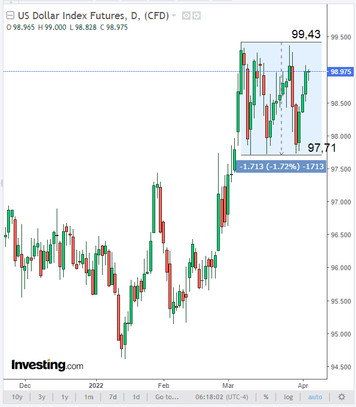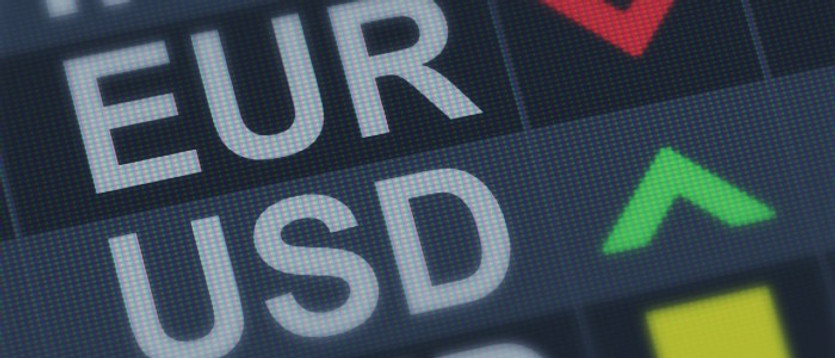The Purchasing Managers' Indices (PMIs) for Germany, France and the Eurozone as a whole were better than expected this morning, staying above 50, which separates growth from slowdown. Thus, the Eurozone Composite Purchasing Managers' Index (PMI) calculated by Markit Economics was 54.9 in March (against the forecast of 54.5 and the value of 55.5 in February). Similar indices published a little earlier for Germany and France also came out with values above the forecast and previous ones. The PMI for the services sector of the Eurozone in March rose to 55.6 from 55.5 in February, indicating a high growth rate at the end of the 1st quarter.
The data presented by Markit Economics shows the growth of the Eurozone economy in March due to the easing of quarantine measures. In February, business activity grew at the fastest pace in five months.
However, these data were not enough for any strong strengthening of the euro.
Market participants do not expect decisive action from the ECB to curb rising inflation. The ECB deposit rate is currently -0.50% and the main interest rate is 0%. According to data from Refinitiv, market participants are factoring in an ECB interest rate hike of just over 50 basis points this year. But with such an increase, the ECB's policy will still be considered soft.
Soaring energy prices that have increased inflationary pressures, weakening consumer confidence and negative real wage growth in the Eurozone make the ECB's task of finding a balance between stimulating weakened economic activity and containing inflationary pressures much more difficult.
Literally at the moment, the EU authorities are considering the possibility of new sanctions against Russia, which is conducting a special military operation in Ukraine.
For example, German Economy Minister Robert Habeck recently stated that the country's government is actively working on a plan for a complete embargo on Russian energy resources. According to him, it is planned that by the end of the summer, Germany will refuse to supply Russian coal, and by the end of the year - from Russian oil, but for now it will maintain cooperation with the Russian side on gas supplies.
Economists warn that the new restrictive measures against Russian energy imports will further accelerate inflation in the Eurozone, and the greater the restrictions and possible consequences of sanctions for the energy market, the more negatively this will affect the euro. As the head of the European Central Bank, Christine Lagarde, recently said, “the longer the conflict lasts, the higher the economic costs will be, and the more likely we will be in worse scenarios”.
Meanwhile, market participants are also preparing for tomorrow's publication (at 18:00 GMT) of the minutes from the March meeting of the Fed, which may contain new details of the plan to tighten monetary policy.
In the meantime, the opinions of market participants regarding the prospects for the dollar are divided. On the one hand, the tightening of the monetary policy of the central bank under normal conditions contributes to the strengthening of the national currency. The propensity of the dollar to increase against some other major currencies, incl. euro and yen was partly due to a massive influx of institutional investment in the US, as the dollar becomes more attractive to those who trade on the difference between interest rates and for long-term investors.
On the other hand, the growth of the dollar as a result of the tightening of the Fed's monetary policy may be limited, some economists believe: a gradual increase in the interest rate does not guarantee curbing inflation, and its sharper growth by 0.50% or more may put pressure on the economy.
In the meantime, the DXY dollar index remains positive, mainly due to the growth of the dollar against the euro and the yen, whose share in the DXY is approximately 58% and 14%, respectively.

As of this writing, DXY futures are traded near 98.98, at the top of the range formed in early March between 99.43 and 97.71.
And today, market participants will pay attention to the publication (at 14:00 GMT) of the ISM report with March data on employment, business activity and new orders in the service sector of the American economy. The Services Purchasing Managers' PMI is expected to rise to 58.0 from 56.5 in February. The relative growth of this indicator and values above 50 indicate an increase in business activity and have a positive effect on the dollar. However, a relative decline in the index, and especially below 50, may have a short-term negative impact on the dollar.





